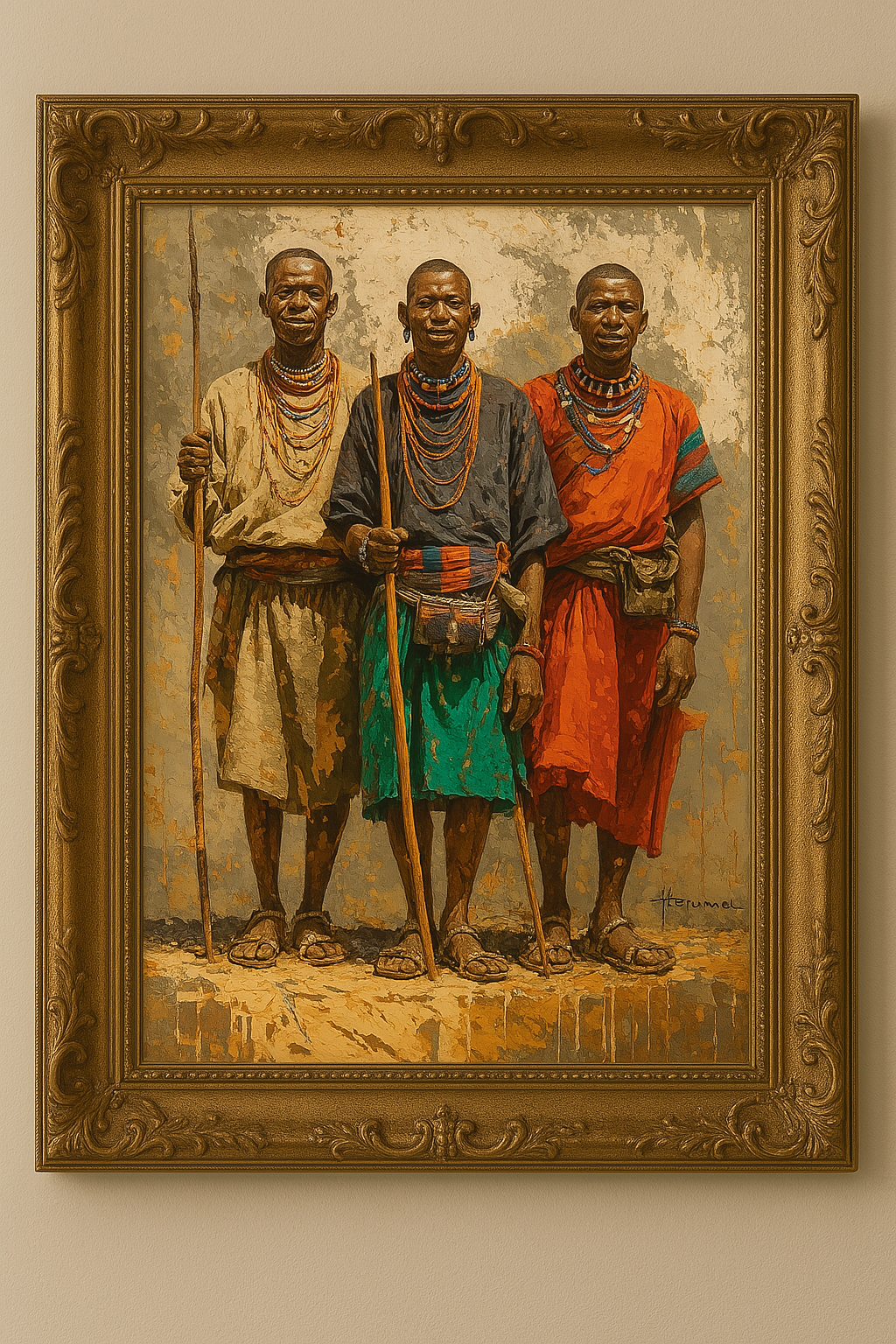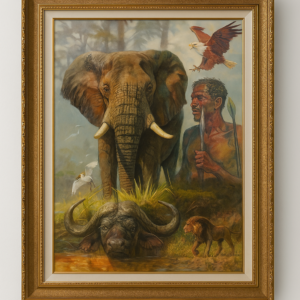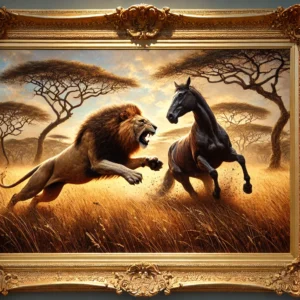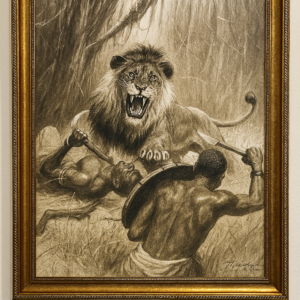“Sons of the Savanna” is a breathtaking visual tribute to resilience, heritage, and the unbreakable bond between the Swahili people and the land they call home. This 4-foot by 3-foot masterpiece, weighing approximately 14 lbs and encased in a luxurious, hand-carved frame, transcends conventional portraiture. It becomes a living testament to legacy — a poetic meditation on youth, strength, and the spiritual rhythm of the African savanna.
At the heart of this powerful composition stand three Swahili boys, solemn and composed, yet full of untold stories. Their posture is dignified; their eyes steady and reflective. Each figure holds a wooden staff, not merely as a practical tool but as a symbol — one of ancestral guidance, journeying, protection, and the continuation of tradition. In Swahili and East African cultures, staffs are carried by elders, shepherds, and spiritual leaders. Here, in the hands of these children, the staff becomes a sign of inherited strength — a quiet reminder that even the young carry ancient wisdom.
The children’s attire is rich in meaning and cultural detail. The first wears a flowing light robe, its gentle hues contrasting with the textured background. The second stands wrapped in a green, patterned skirt — its vibrant design speaking to the visual storytelling and spiritual connectivity found in Swahili textiles. The third is adorned in a bold red cloth, its intensity anchoring the composition and reflecting a spirit of courage, passion, and identity. Together, their garments harmonize past and present — ceremonial and everyday — in a language spoken without words.
Their beaded necklaces, intricately layered and textured, shimmer softly against the earth-toned backdrop. Each bead, each strand, tells a silent story — of family, community, rites of passage, and cultural pride. Beadwork in many Swahili communities is not merely decorative; it is communicative, a visual archive of the wearer’s lineage, tribe, or personal milestones. This attention to detail transforms the painting from a portrait into a cultural document, vibrating with historical depth and living memory.
The background of “Sons of the Savanna” is a character in its own right — a sweeping expanse of raw, textured strokes that mimic the terrain of East Africa. It feels both eternal and ever-changing, mirroring the rhythm of wind through tall grasses or the warmth of sunlit soil. Rendered in earthy hues of ochre, burnt sienna, and golden beige, the landscape doesn’t just frame the figures — it envelops them. It whispers of ancient paths, of footprints long erased but never forgotten, and of generations rooted deeply in the soil.
Technically, the painting showcases masterful brushwork — textured yet controlled, emotive yet intentional. The light is soft and ambient, suggesting the glow of a savanna sunset, when shadows lengthen and the world grows contemplative. The interplay of light and shadow on the children’s skin, the folds of their garments, and the subtle glint of their adornments creates a visual depth that invites the viewer to pause and reflect.
Encased in a luxury 4-inch-deep frame, hand-carved and finished in rich gold tones, the artwork is physically as majestic as its subject matter. The frame adds not only structure but grandeur, enhancing the piece’s storytelling power. At 14 lbs, the painting has both visual and literal weight — designed to be the focal point of any space it graces, from modern homes to curated gallery walls, from cultural institutions to quiet corners of reflection.
But what sets “Sons of the Savanna” apart is its emotional truth. It is not a recreation of a moment; it is the embodiment of many moments — of childhood intertwined with ancestry, of future generations shaped by sacred traditions, and of a people whose spirit endures through change, through challenge, through time.
This is a work of art that speaks to collectors, cultural enthusiasts, and anyone with a reverence for authenticity. It offers a visual journey into the soul of East Africa — not just its landscapes, but its values, its voices, its unspoken wisdom passed down through generations.
“Sons of the Savanna” is not just to be seen — it is to be felt. It is to be remembered.





Reviews
There are no reviews yet.